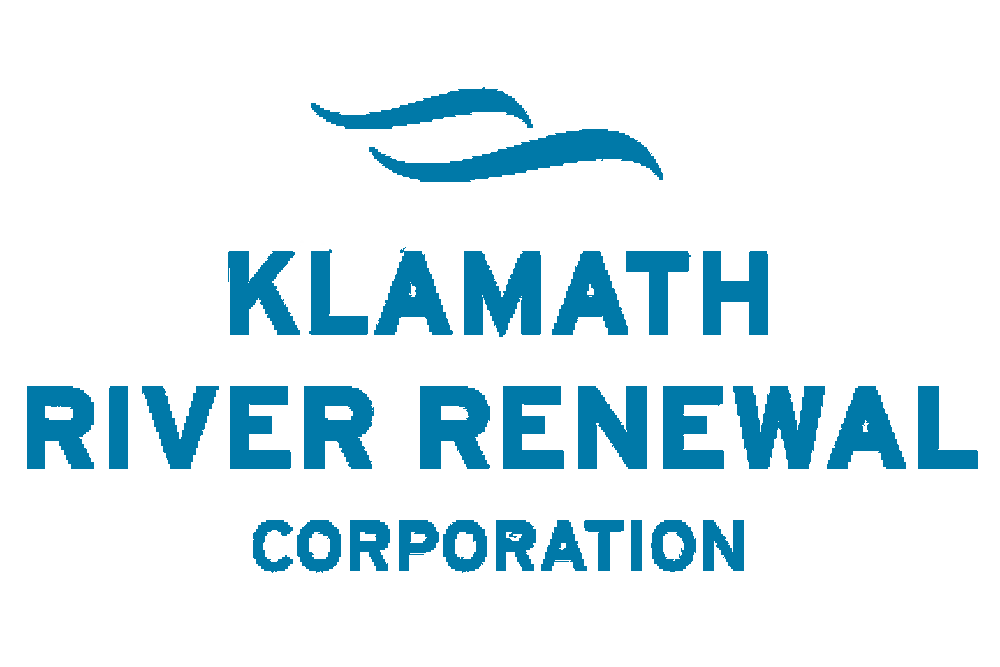FOR IMMEDIATE RELEASE
February 15, 2024
CONTACT:
Ren Brownell, KRRC
530-670-0016
ren@klamathrenewal.org
Initial Phase of Drawdown Complete, Restoration Underway
Draining of reservoirs expected to be completed by late spring, after which removal of the dams will take place
Draining of reservoirs expected to be completed by late spring, after which removal of the dams will take place
Hornbrook, Calif. – The initial phase of drawdown – the draining of Iron Gate, Copco, and JC Boyle reservoirs – is now complete. Draining the reservoirs is a critical step on the path to deconstructing the remaining three Klamath River dams that are slated for removal later this year. With the reservoirs emptied, the Klamath River now winds its way through the former reservoir footprints, cutting though a century of accumulated sediment and finding its historical path. Extensive testing of the sediment that had accumulated behind the dams revealed that it is predominantly dead algae and is not a concern for human health.
“Seeing the river reemerge is inspiring,” said Mark Bransom, CEO of the Klamath River Renewal Corporation, the entity that is overseeing the dam removal and restoration process. “The Klamath is now reconnected for the first time in a century. While we are in the very earliest stages of restoring this important waterway, we can envision a bright future for what was once the third most productive salmon bearing river on the West Coast of the lower 48 states.”
As the reservoir footprints began to recede, restoration crews swiftly went to work sowing millions of seeds from scores of native plants.
“We contracted with the Yurok Tribe to perform the initial revegetation work, and they literally could not wait to begin,” said Dave Coffman, Klamath Restoration Program Manager for Resource Environmental Solutions (RES), the restoration contractor. “Crews were planting acorns and broadcasting seed by hand the day after the first reservoir started to drain. We have billions of seeds in storage so the disturbed areas can be fully treated.”
While the reservoir waters have drained and the Klamath River has returned to baseline flows, the reservoirs have the potential to partially refill due to spring run-off. Replanting the 2,200 acres of exposed reservoir area is a key part of the plan to stabilize the soil and control erosion as the river re-establishes itself.
During the entire drawdown process, which is anticipated to span several months, around 5 million cubic yards of sediment is expected to go downstream, causing water quality impacts for a limited duration. That is why this time of year was chosen. Adult salmon are out to sea, and juvenile salmon generally overwinter in the tributaries and not the main stem of the river.
Knowing that a small percentage of juvenile coho would be present in the mainstem river during this time of year, RES worked with the Karuk Tribe fisheries department to capture and relocate almost 250 coho salmon to off-channel rearing ponds constructed by the tribe before drawdown started.
While water quality in the river is currently poor, turbidity will ebb and flow as storm events contribute more water to the system. The water quality impacts of dam removal will taper off over the next two years. The Renewal Corporation is fully complying with regulatory permits in implementing the drawdown.
“Our native fish have evolved to survive many challenges, including periods when water quality is not ideal,” said Daniel Chase, Director of Fisheries, Aquatics & Design for RES. “High levels of suspended sediment in the river is not unusual in itself. Burn scars, mudslides and other events can contribute a great deal of sediment to the river and cause fish mortality, but the vast majority of fish respond by moving into tributaries or finding areas with better water quality. In this they can find ways to survive conditions and persist even when conditions look bad to us.”
As predicted in state and federal environmental reviews, there was significant fish mortality in the reservoirs due to the extreme turbidity that accompanied drawdown.
###
You can view the press release from the initiation of drawdown HERE.
You can find footage and images of the drawdown initiations and process HERE.
You can find a recording of February 15th’s virtual press conference HERE.
The Klamath River Renewal Corporation (KRRC) is a private, independent nonprofit 501(c)(3) organization formed in 2016 by 23 signatories of the amended Klamath Hydroelectric Settlement Agreement, or KHSA. KRRC is part of a cooperative effort to re-establish the natural vitality of the Klamath River so that it can support all communities in the Klamath Basin. Signatories, which include the States of California and Oregon, local governments, Tribal nations, dam owner PacifiCorp, irrigators, and several conservation and fishing groups, appointed KRRC to take ownership and oversee removal of four hydroelectric dams on the river.
